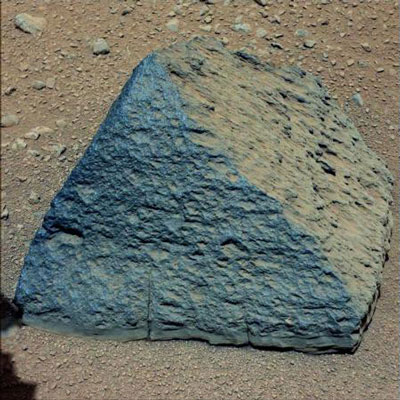 A team of Caltech-led scientists reports its analysis of a surprisingly Earth-like martian rock, discovered by the Mars Science Laboratory rover Curiosity, that offers new insight into the history of Mars's interior and suggests parts of the Red Planet may be more like our own than we ever knew.
A team of Caltech-led scientists reports its analysis of a surprisingly Earth-like martian rock, discovered by the Mars Science Laboratory rover Curiosity, that offers new insight into the history of Mars's interior and suggests parts of the Red Planet may be more like our own than we ever knew.
Sep 27th, 2013
Read more
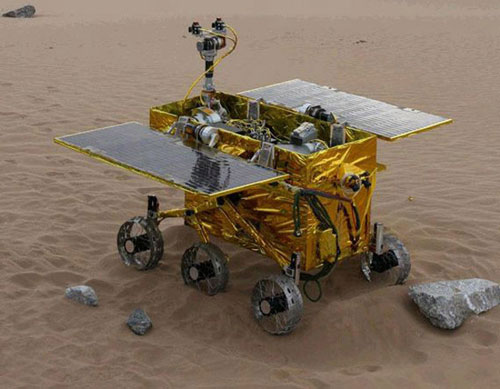 Chinese scientists described the country's first moon rover on Wednesday and invited the global public to come up with a name for it.
Chinese scientists described the country's first moon rover on Wednesday and invited the global public to come up with a name for it.
Sep 27th, 2013
Read more
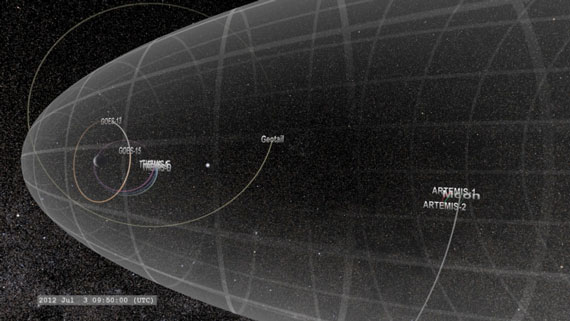 Scientists have provided the most comprehensive details yet of the journey energy from the sun takes as it hurtles around Earth's magnetosphere. Understanding the changes energy from the sun undergoes as it travels away and out into space is crucial for scientists to achieve their goal of some day predicting the onset of space weather that creates effects such as the shimmering lights of the aurora or interruptions in radio communications at Earth.
Scientists have provided the most comprehensive details yet of the journey energy from the sun takes as it hurtles around Earth's magnetosphere. Understanding the changes energy from the sun undergoes as it travels away and out into space is crucial for scientists to achieve their goal of some day predicting the onset of space weather that creates effects such as the shimmering lights of the aurora or interruptions in radio communications at Earth.
Sep 26th, 2013
Read more
The quest for evidence of life on Mars could be more difficult than scientists previously thought. Researchers detail the investigation of a chemical in the Martian soil that interferes with the techniques used by the Curiosity rover to test for traces of life. The chemical causes the evidence to burn away during the tests.
Sep 26th, 2013
Read more
For astrophysicists, the interplay of hydrogen - the most common molecule in the universe - and the vast clouds of dust that fill the voids of interstellar space has been an intractable puzzle of stellar evolution.
Sep 26th, 2013
Read more
The first scoop of soil analyzed by the analytical suite in the belly of NASA's Curiosity rover reveals that fine materials on the surface of the planet contain several percent water by weight.
Sep 26th, 2013
Read more
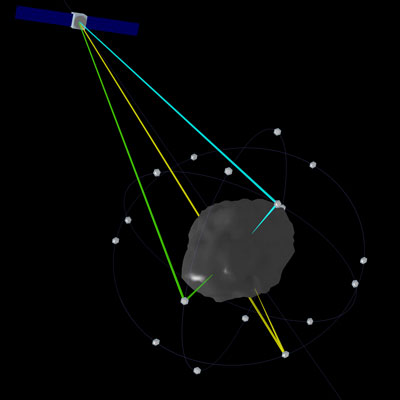 A space-based laser system proposed to NASA by University of Alabama in Huntsville researchers could be a cost-effective way to nudge small asteroids away from a collision course with Earth.
A space-based laser system proposed to NASA by University of Alabama in Huntsville researchers could be a cost-effective way to nudge small asteroids away from a collision course with Earth.
Sep 26th, 2013
Read more
An international team, with participation from the University of Bern, has produced the first map of clouds on an exoplanet using the Kepler Space Telescope. Studying the atmospheres of exoplanets is the path towards ultimately identifying life elsewhere in the Universe. Understanding the role of clouds in exoplanet atmospheres is a necessary ingredient in the cosmic hunt for life.
Sep 26th, 2013
Read more
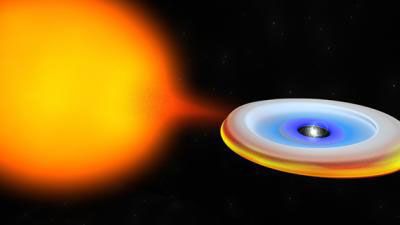 Astronomers have uncovered the strange case of a neutron star with the peculiar ability to transform from a radio pulsar into an X-ray pulsar and back again. This star's capricious behavior appears to be fueled by a nearby companion star and may give new insights into the birth of millisecond pulsars.
Astronomers have uncovered the strange case of a neutron star with the peculiar ability to transform from a radio pulsar into an X-ray pulsar and back again. This star's capricious behavior appears to be fueled by a nearby companion star and may give new insights into the birth of millisecond pulsars.
Sep 25th, 2013
Read more
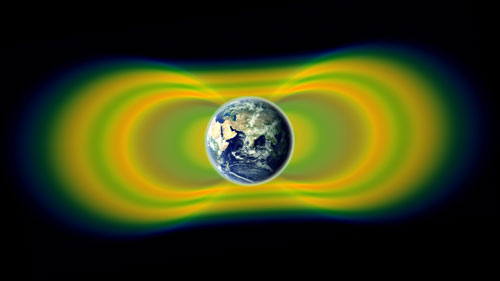 In the already complicated science of what creates -- and causes constant change in -- two giant doughnuts of radiation surrounding Earth, researchers have added a new piece of information: Some of the electrons reach such enormous energies that they are driven by an entirely different set of physical processes.
In the already complicated science of what creates -- and causes constant change in -- two giant doughnuts of radiation surrounding Earth, researchers have added a new piece of information: Some of the electrons reach such enormous energies that they are driven by an entirely different set of physical processes.
Sep 24th, 2013
Read more
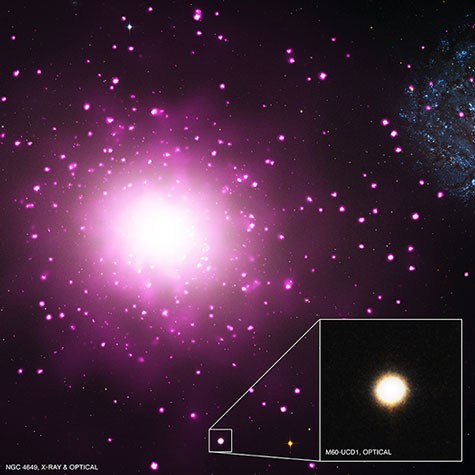 The densest galaxy in the nearby Universe may have been found. Packed with an extraordinary number of stars, this unusual galaxy is providing astronomers with clues to its intriguing past and how it fits into the galactic evolutionary chain.
The densest galaxy in the nearby Universe may have been found. Packed with an extraordinary number of stars, this unusual galaxy is providing astronomers with clues to its intriguing past and how it fits into the galactic evolutionary chain.
Sep 24th, 2013
Read more
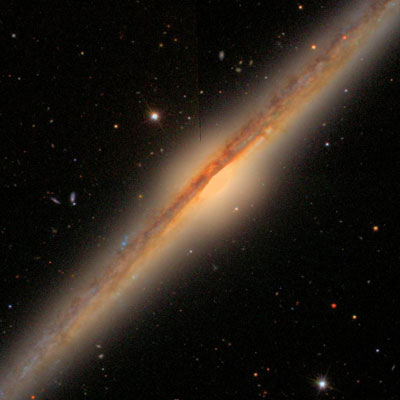 More than 83,000 volunteer citizen scientists. Over 16 million galaxy classifications. Information on more than 300,000 galaxies. This is what you get when you ask the public for help in learning more about our universe.
More than 83,000 volunteer citizen scientists. Over 16 million galaxy classifications. Information on more than 300,000 galaxies. This is what you get when you ask the public for help in learning more about our universe.
Sep 24th, 2013
Read more
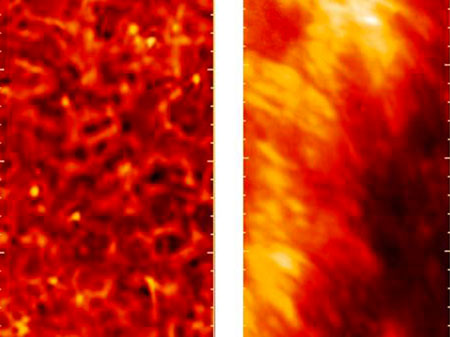 Data of the Sunrise observatory provide first detailed images of the chromosphere in ultraviolet light.
Data of the Sunrise observatory provide first detailed images of the chromosphere in ultraviolet light.
Sep 24th, 2013
Read more
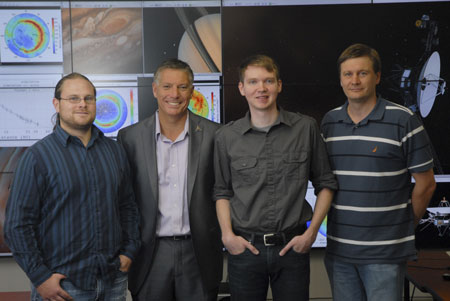 A University of Alabama graduate student and a recent UAH doctoral graduate are exploring surprising data from Voyager 1's crossing of the heliopause into the interstellar medium of our galaxy.
A University of Alabama graduate student and a recent UAH doctoral graduate are exploring surprising data from Voyager 1's crossing of the heliopause into the interstellar medium of our galaxy.
Sep 24th, 2013
Read more
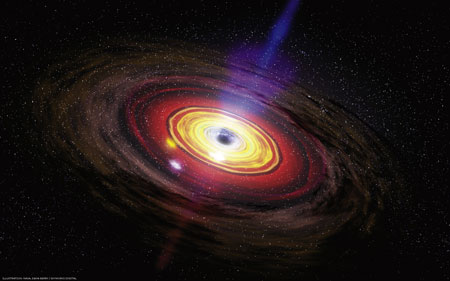 Two million years ago a supermassive black hole at the heart of our galaxy erupted in an explosion so immensely powerful that it lit up a cloud 200,000 light years away, a team of researchers led by the University of Sydney has revealed.
Two million years ago a supermassive black hole at the heart of our galaxy erupted in an explosion so immensely powerful that it lit up a cloud 200,000 light years away, a team of researchers led by the University of Sydney has revealed.
Sep 24th, 2013
Read more
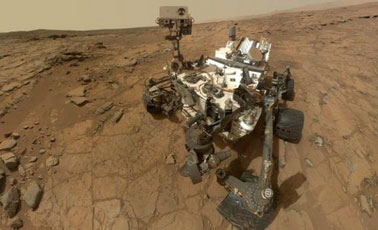 Responding to a space exploration roadmap recently released by NASA and the International Space Exploration Coordination Group that calls for robotic and human missions to near-Earth asteroids, the Moon and Mars, Srilanth Saripalli argues that most of the arguments in favor of manned space exploration are based on near-sighted assumptions about emerging developments in robotics.
Responding to a space exploration roadmap recently released by NASA and the International Space Exploration Coordination Group that calls for robotic and human missions to near-Earth asteroids, the Moon and Mars, Srilanth Saripalli argues that most of the arguments in favor of manned space exploration are based on near-sighted assumptions about emerging developments in robotics.
Sep 23rd, 2013
Read more
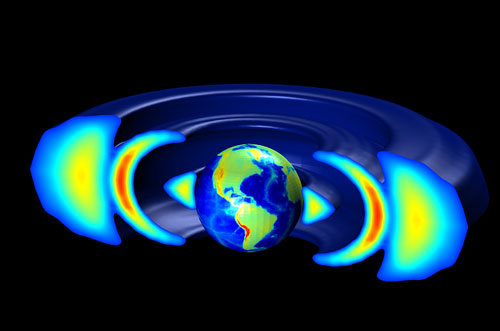 Since the discovery of the Van Allen radiation belts, scientists believed these belts consisted of two rings of highly charged particles. In February, scientists reported the discovery of a previously unknown third radiation ring - a narrow ring that briefly circled the Earth for a month. UCLA space scientists have successfully modeled and explained the unprecedented behavior of this third ring, and show that its energetic particles are driven by very different physics than the others.
Since the discovery of the Van Allen radiation belts, scientists believed these belts consisted of two rings of highly charged particles. In February, scientists reported the discovery of a previously unknown third radiation ring - a narrow ring that briefly circled the Earth for a month. UCLA space scientists have successfully modeled and explained the unprecedented behavior of this third ring, and show that its energetic particles are driven by very different physics than the others.
Sep 22nd, 2013
Read more
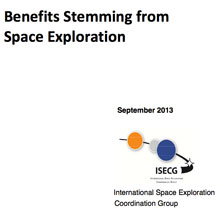 NASA and the International Space Exploration Coordination Group (ISECG) released a white paper Friday outlining benefits of human exploration of space.
NASA and the International Space Exploration Coordination Group (ISECG) released a white paper Friday outlining benefits of human exploration of space.
Sep 20th, 2013
Read more
 A team of Caltech-led scientists reports its analysis of a surprisingly Earth-like martian rock, discovered by the Mars Science Laboratory rover Curiosity, that offers new insight into the history of Mars's interior and suggests parts of the Red Planet may be more like our own than we ever knew.
A team of Caltech-led scientists reports its analysis of a surprisingly Earth-like martian rock, discovered by the Mars Science Laboratory rover Curiosity, that offers new insight into the history of Mars's interior and suggests parts of the Red Planet may be more like our own than we ever knew.
 Subscribe to our Space Exploration News feed
Subscribe to our Space Exploration News feed











